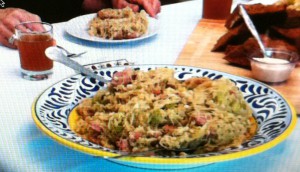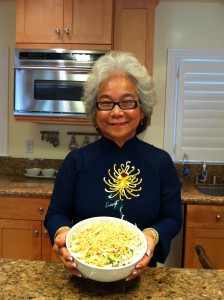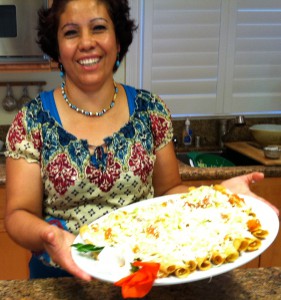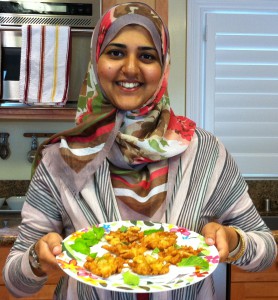Rita shares a Polish family recipe for sauerkraut with turkey kielbasa. The juniper berries and bay leaves add a distinctive flavor to this recipe.
Cut one head of celery into half inch pieces and place into a tall, empty pot. Add in three Granny Smith apples (peeled, medium diced). Add three whole jars (24 oz.) of sauerkraut. Add 1/2 to 3/4 cup of uncooked pearl barley, depending on desired thickness. Add 2 fresh California Bay leaves (remember to remove these leaves when the dish is cooked). Next, crush and add 2 tablespoons of juniper berries. Season to taste with black pepper. Score and peel 3 packages (14 oz.) Hillshire Farms Turkey Polish Kielbasa sausage. Cut sausage into 1/4 to 1/2 inch pieces before adding to the pot.
With all the ingredients in the pot, place a lid on and move pot onto the stove (no stirring needed). Bring contents to a boil. After boiling, reduce heat to low and let cook for one hour and a half. While cooking, stir contents every fifteen minutes with a wooden spoon.
Serves well with mashed potatoes and green beans, and a dollop of horseradish and mustard on the side. Enjoy on Thanksgiving or all year round!




